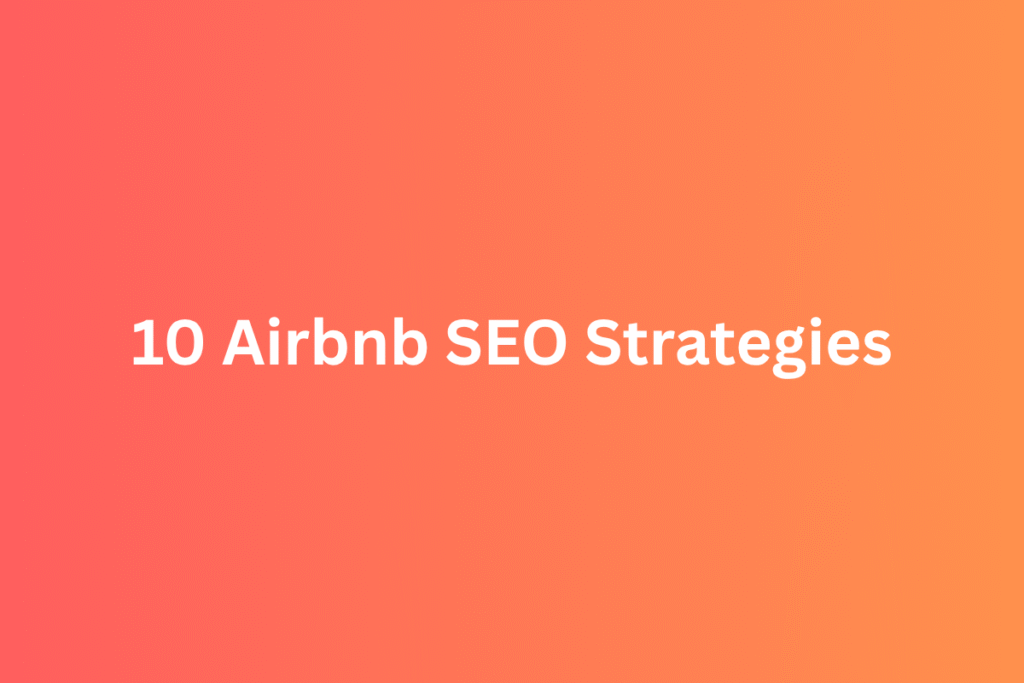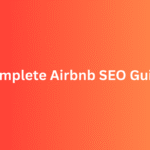Airbnb Isn’t Just About Homes It’s an SEO Powerhouse
When we think of Airbnb, we think of beautiful vacation homes, digital nomads, and budget-friendly travel. But behind that friendly UI is one of the strongest SEO strategies on the internet. Have you ever Googled “New York apartments for rent short-term” or “homestay in Paris”? Chances are, Airbnb popped up right there on top outranking even travel blogs and local real estate websites.
That’s not by accident. Airbnb has built a content + technical + product-driven SEO system that works at scale. And the best part? Many of their strategies can be replicated on a smaller level especially if you’re working on a travel blog, local listings site, or even a service-based business.
Let’s break down how Airbnb wins Google’s heart (and search rankings) and what you can learn from it.
1. SEO-Friendly URL Structure: City, Category, and Cleanliness
Airbnb’s URL structure is brilliantly clean and keyword-friendly. Take a look:
https://www.airbnb.com/s/paris/homeshttps://www.airbnb.com/s/london/homes
That /s/city/homes structure is not just clean it’s packed with intent. The word “homes” is a high-intent keyword, and pairing it with city names allows Airbnb to target location-specific keywords at scale.
What You Can Learn:
- Use a clean and descriptive URL structure.
- Include keywords like city names, service types (like “rentals”, “stays”, “experiences”), and avoid random strings or numbers.
- Design your sitemap in a way that Google understands the hierarchy location → category → listing.
2. Local Landing Pages: 1000s of City Pages That Rank
Airbnb has created individual landing pages for every city, town, and neighborhood. These pages aren’t just generated they’re optimized.
Each page includes:
- City name in the H1 and title
- A description of the location
- List of properties (dynamically loaded)
- Map + filters
- Internal links to neighborhoods, nearby cities, and categories
This tactic helps Airbnb dominate long-tail searches like:
- “best airbnb in Bandra Mumbai”
- “pet-friendly stays in Brooklyn”
They’re basically owning local SEO at scale.
What You Can Learn:
- Create local landing pages for each city, service area, or neighborhood you target.
- Add value: write a short intro about the location, highlight benefits, and add FAQs.
- Use internal links to nearby areas or categories.
3. Dynamic Listings = Fresh Content
Every time a host lists a new property, Airbnb’s page for that city automatically updates. That means Google sees new content regularly, which helps maintain rankings.
This strategy works beautifully at scale because thousands of listings = thousands of content refreshes every day.
What You Can Learn:
- If you have a platform or directory, allow user-generated content (listings, reviews, posts) that keeps pages active.
- For service-based websites: update your location pages regularly with testimonials, case studies, blog links, etc.
- Fresh content tells Google: “Hey, we’re alive and useful!”
4. User Reviews = Natural Keyword-Rich Content
One of Airbnb’s secret weapons? Thousands of user reviews on each listing and city page. These reviews:
- Use natural long-tail keywords (e.g., “close to Times Square”, “quiet neighborhood”, “dog-friendly”)
- Build trust and engagement
- Are constantly updating
The content in reviews helps listings rank for unexpected but valuable queries things that hosts never even thought to optimize for.
What You Can Learn:
- Encourage user reviews or testimonials and display them on key pages.
- Reviews = natural SEO + trust + conversions.
- Bonus tip: Add a review schema to show star ratings in search results (called Rich Snippets).
5. Internal Linking Mastery
Airbnb’s internal linking is beautifully automated. On every listing or location page, you’ll find:
- Nearby destinations
- Popular categories (e.g., “homes with pools”)
- Related collections (e.g., “cabins in Himachal”)
This keeps users browsing longer and helps Google understand the site structure and content relationships.
What You Can Learn:
- Add internal links from one city/service page to others.
- Use anchor texts like “Explore more stays in Goa” or “See pet-friendly options in your area”.
- Internal linking = better crawlability + lower bounce rate.
6. Mobile First, Always
Airbnb’s website loads lightning fast and is perfectly responsive. Given that most bookings now happen on mobile, this isn’t just about UX it’s crucial for SEO too.
Google uses mobile-first indexing, meaning your site’s mobile experience is what gets evaluated for ranking.
What You Can Learn:
- Your site must be fully mobile-optimized.
- Use tools like Google’s Mobile-Friendly Test and PageSpeed Insights.
- Avoid popups that block content on mobile they hurt SEO and UX.
7. Schema Markup Done Right
Airbnb uses structured data like Product, Breadcrumb, and Review schema on its listings. This allows search engines to:
- Understand content better
- Display rich snippets (like star ratings, prices)
- Show breadcrumbs in results
This improves click-through rate (CTR) even if they rank #2, users are more likely to click on a result that has extra information.
What You Can Learn:
- Implement Schema.org structured data on your listings or service pages.
- Start with
LocalBusiness,Product,FAQ, orReviewschema. - Use Google’s Rich Results Test to validate.
8. SEO + Product Thinking = Gold
One reason Airbnb’s SEO works so well is because it’s baked into the product design not just added as an afterthought. When they launch a new category or feature, they think about the search angle too.
Example: When Airbnb launched “Categories” (like treehouses, lakefront homes, etc.), they created:
- Category pages
- Filters
- SEO-optimized descriptions
- Internal links from other pages
What You Can Learn:
- Don’t treat SEO as an isolated task. Think SEO when building pages or adding features.
- Before launching a new service or product, ask: “What would someone Google to find this?”
- Then create a dedicated, optimized page for that.
9. Local SEO with Google Maps + GBP
Airbnb listings often show up in Google Maps and local packs, especially in smaller towns or tourist hubs. This is thanks to a strong Google Business Profile (GBP) strategy for some of their hubs and services.
They also encourage hosts to optimize their own listings with exact addresses, nearby landmarks, and accurate categories.
What You Can Learn:
- If you run a local service or rentals platform, create and optimize your Google Business Profile.
- Add photos, get reviews, respond to queries, and post updates.
- Use location-specific keywords in your descriptions.
10. Global SEO: Multiple Languages, Subdomains, and Hreflang
Airbnb operates in 190+ countries and they handle international SEO like pros. They use:
- Hreflang tags to serve the right language and country version
- Subdomains like
fr.airbnb.com,de.airbnb.comfor location targeting - Translated content with local keyword optimization
This helps Airbnb rank well across local versions of Google not just google.com.
What You Can Learn:
- If your audience is global, use hreflang tags.
- Translate your content properly don’t just rely on Google Translate.
- Consider separate subfolders or subdomains for different regions.
Airbnb’s SEO = Scale + Structure + Smart UX
Airbnb didn’t get to the top of Google just by writing a few blogs. Their SEO strategy is a blend of technical excellence, content at scale, and user-first design.
But even if you don’t run a global platform, you can still learn a lot:
- Think local, and create pages for every city or category you serve.
- Make your site clean, crawlable, and full of useful internal links.
- Use user-generated content to your advantage.
- Structure your content so it helps both users and search engines.
Whether you’re running a travel blog, a rental site, or a local directory these principles work.
FAQs
Discover more from PratsDigital
Subscribe to get the latest posts sent to your email.



Pingback: Airbnb SEO Guide: How to Rank Higher and Get More Bookings
Pingback: 10 Ways to Improve Airbnb Search Ranking: A Practical Guide for Hosts - PratsDigital
Pingback: Understanding Differentiated Marketing Strategy For Businesses - PratsDigital
Pingback: 13 Airbnb SEO Methods to Rank Higher and Get More Guests - PratsDigital